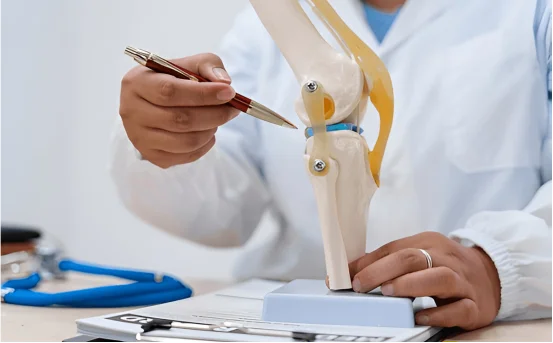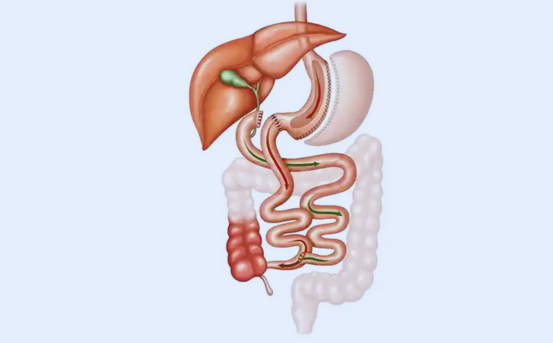The patella is also known as the kneecap and plays an important role in knee stability. When the patella moves out of its groove, a condition called patellar mistracking, it can cause chronic knee pain and instability. In these cases, Patellar Realignment Surgery can be recommended to restore alignment and function. Understanding the types of patellar realignment surgery.
Why is Patellar realignment surgery needed?
When a types of patellar realignment surgery is needed, it can be caused by:
- Recurrent patellar Dislocations
- Chronic Patellar Instability
- Congenital misalignment affecting the patella
- Severe patellar tracking disorders
- Non-surgical treatment like bracing and physiotherapy
Untreated, these conditions can cause not only knee pain and functional limitations, but also damage cartilage that may lead to early onset arthritis. The surgical intervention is designed to correct this issue by realigning and smoothing out the kneecap during knee movement.
1. Lateral Release Surgery
Lateral Release is a common minimally-invasive patellar surgery. This procedure is used when the retinaculum, a band of tissue located on the outside of the knee, becomes too tight and pulls the patella inwards.
How it Works:
- The surgeon uses arthroscopy and small incisions to cut the tight lateral tissues.
- This allows the patella’s natural groove to be restored.
Ideal for:
- Patients with mild patellar maltracking
- There is no major bone misalignment
- First-time dislocators, with tight lateral tissue
Pros:
- Minimum Invasive
- Quick recovery time
- Outpatient procedures are often performed
Cons:
- In severe cases, it may not be enough to solve the problem.
- Overdoing it can lead to medial instabilities
2. Reconstruction of the Medial Patellofemoral Ligament
The MPFL acts as the main ligament to keep the patella in position during early knee movements. The MPFL is torn in most patellar dislocations. MPFL Reconstruction can be a very effective surgery for restoring this ligament.
How it Works:
- The MPFL is repaired using a graft, usually taken from the hamstring tendon of the patient.
- The graft mimics the original ligament by being attached to both the femur (femur bone) and patella (patella bone).
Ideal for:
- Patients with MPFL tear after dislocation
- Chronic patellar instability
- Athletes who have suffered repeated knee dislocations
Pros:
- Restores stability to the kneecap
- High success rate
- Combines well with other procedures
Cons:
- Recovery time is slightly longer (6-9 months) for full return to sports.
- If not done correctly, there is a risk of stiffness and graft failure.
3. Tibial Tubercle Transfer or Osteotomy
This is a bone realignment procedure that’s used for more complex cases. To adjust the tracking of the patella, the tibial tubercle is moved surgically.
Types:
- Anteromedialization (Fulkerson Osteotomy). – moves the tubercle inward and forward.
- Medialization — shifts the medial side towards the inner knee
How it Works:
- The tibial tubeercle is repositioned by screws after it has been cut.
- This improves the tracking and changes the alignment of your patellar tendon.
Ideal for:
- Severe patella maltracking or tilt
- High Q-angle
- Failure of soft tissue realignment surgery
Pros:
- Correction of bony alignment
- Often provides lasting relief
Cons:
- The infection is invasive and requires time for bone healing
- Recovery can take up to 3-6 months
- Use of crutches or knee brace for a short time is necessary
4. Distal Realignment Techniques
They are often combined with tibial tubercle transfers, and involve repositioning of the tendon. Sometimes surrounding tissues may also be altered to stabilize the patella.
Techniques May Include:
- Roux-Goldthwait Procedure
- Elmslie-Trillat Procedure
- Maquet procedure
The patellar tendon is often rerouted to ensure proper alignment.
5. Trochleoplasty (Groove Deepening Surgery)
Some patients, particularly those with Trochlear Dysplasia have a groove that is either too shallow or malformed. Trochleoplasty specializes in deepening this groove.
How it Works:
- A segment of the bone is cut, reshaped and enlarged to create a deeper groove.
- The groove is reshaped to guide the patella when it moves.
Ideal for:
- Severe congenital patellar instability
- Previous surgeries that failed
- Trochlear dysplasia diagnosed via MRI
Pros:
- The root cause of the disease is addressed
- Effective for long-term stabilisation
Cons:
- Technically complex
- Recovery time is longer
- If rehab is not strictly followed, it may cause postoperative stiffness
Recovery after Patellar Realignment Surgery
Recovery depends on the type of procedure but includes:
- Immobilization and initial rest using braces
- Start of physical therapy within a few week
- Gradual return to activity within 3-6 month
- A full recovery of athletes can take as long as 9 months
It is important to undergo proper rehabilitation in order to prevent a re-dislocation of the knee and restore full function.
Conclusion
Patellar Realignment Surgery can be a life-changing surgery for those who suffer from chronic instability or dislocation of the kneecap. There are several options for surgery, ranging from minimally invasive lateral release up to complex tibial tubercle transfers. The choice is based on your severity, anatomical factors and level of activity.
To determine the most effective treatment, an orthopedic surgeon must perform a thorough evaluation, which includes MRIs, X-rays and physical examinations. The right surgical approach, combined with post-op treatment, can help patients return to an active, pain-free lifestyle.























